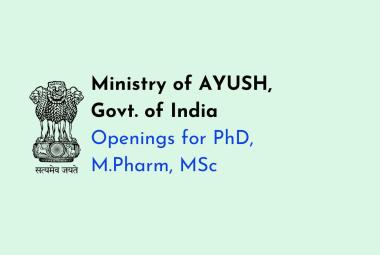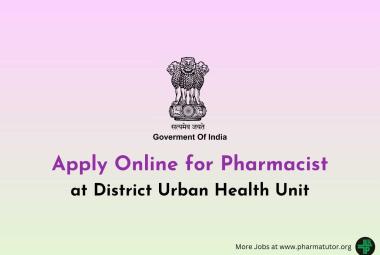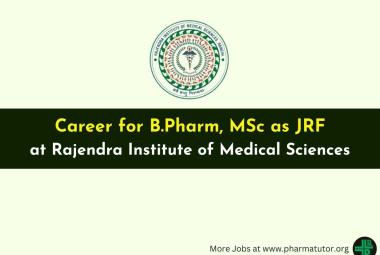{ DOWNLOAD AS PDF }
ABOUT AUHTORS:
Suresh Rewar1*, Bansal BK1, Singh CJ2, Sharma AK2
1Department of pharmaceutics, Arya College of Pharmacy, Jaipur, Rajasthan India
2Department Of Pharmacology, Arya College of Pharmacy, Jaipur, Rajasthan India
sureshrewar1990@gmail.com
ABSTRACT
Chronopharmaceutical drug delivery systems are gaining a lot of interest as they deliver the drug at the right site of action, right time and right amount, as per the pathophysiological needs of the diseases. These systems are basically time-controlled drug delivery systems in which the system controls the lag time independent of environmental factors like pH, enzymes, GIT motility, etc. These systems are designed for chronopharmacotherapy which is based on the circadian rhythm of the body. The effectiveness and toxicity of many drugs vary depending on dosing time associated with 24 hr. rhythms of biochemical, physiological and behavioral processes under the control of circadian clock. The chronobiology of the various common 24-hour BP profiles seen in hypertensive patients in relation to cardiovascular risk and end-organ injury and ultimately the control and normalization of abnormal BP throughout daytime activity and night time sleep. Chronopharmacotherapy provides a means of individualizing the treatment of hypertension according to the circadian BP profile of each patient, and constitutes a new option to optimize BP control and to reduce the risk of cardiovascular disease. Various latest and upcoming marketed technologies of Chronopharmaceutical drug delivery used in treatment of hypertension diseases like OROS®, CODAS®, CEFORM®, DIFFUCAPS®, PULSINCAP® etc.
[adsense:336x280:8701650588]
REFERENCE ID: PHARMATUTOR-ART-2316
|
PharmaTutor (ISSN: 2347 - 7881) Volume 3, Issue 2 How to cite this article: S Rewar, BK Bansal, CJ Singh, AK Sharma; Chronopharmacotherapy of Hypertension: Time-dependent effects of treatment on blood pressure; PharmaTutor; 2015; 3(3); 18-23 |
INTRODUCTION
Over the last 35 years the pharmaceutical market has focused increasing preferably for controlled and targeted drug delivery system. Such systems have been focused on constant, variable; sustain drug release or targeting the therapeutic agent to a specific site. Oral controlled drug delivery systems represent the most popular form of controlled drug delivery systems for the obvious advantages of oral route of drug administration. The oral controlled release system shows a typical pattern of drug release in which the drug concentration is maintained in the therapeutic window for a prolonged period of time[1]. The advancement of technologies in the pharmaceutical field, drug delivery systems have drawn an increasing interest over the last few decades. Nowadays the emphasis of pharmaceutical galenic research is turned towards the development of more efficacious drug delivery systems with already existing molecule rather than going for new drug discovery and development process[2].
Circadian rhythms are a characteristic feature of all human beings and often result in similar physiological phenomena over a period of time. Circadian rhythms can affect many systems within the body, including the cardiovascular and respiratory systems. Circadian rhythm diseases are disorders that are based on biological circadian rhythms and often occur during a predictable period of time [3] [4]. Pulsatile preparations allow for sudden drug release after a time gap or predetermined lag time that corresponds to the circadian rhythm of a particular disease state. The lag time can be controlled either by osmosis or by the use of an erodible, soluble, or rapturable membrane[5].
Chronopharmaceutics: “Chronopharmaceutics” consist of two words chronobiology and Pharmaceutics. Chronobiology is the study of biological rhythms (circadian, ultradian and infradian) and their mechanisms [3].
[adsense:468x15:2204050025]
Biological rhythm: A biological rhythm is a self-sustaining process inside the human body. It is defined as the process that occurs periodically in an organism in conjugation with and often in response to periodic changes in environmental condition. There are three types of mechanical rhythms in our body[7]; they are Ultradian Rhythms (more than one cycle per 24 hour) E.g.90 minutes sleep cycle[5],Infradian Rhythms (less than one cycle per 24hours) E.g. Monthly Menstruation, Circadian rhythm (24-hour period) (regulates many body functions in humans like metabolism, physiology, behavior, sleep pattern)[8]
Chronopharmacotherapy: In chronopharmacotherapy (timed drug therapy) drug administration is synchronized with biological rhythms to produce maximal therapeutic effect and minimum harm for the patient. Control release systems for 12 or 24 hr drug release are not suitable for diseases, which follow circadian variation. In that condition there is requirement for time or pulsatile drug delivery system. Several physiological processes in humans vary in a rhythmic manner, in synchrony with the internal biological clock as shown in Figure1. Many of circadian dependent diseases display acute symptoms in early morning hours or in the morning at awakening. In case of cardiovascular diseases, BP is at its lowest during the sleep cycle and rises steeply during the early morning period. In peptic ulcer acid secretion is high in the afternoon and at night[6].
 Figure1: Diseases displaying circadian rhythm[23]
Figure1: Diseases displaying circadian rhythm[23]
Cardiovascular diseases
In cardiovascular disease capillary resistance and vascular reactivity are higher in the morning and decreases latter in the day. Platelet agreeability is increased and fibrinolytic activity is decreased in the morning, leading to a state of relative hypercoagulability of the blood. Because of this reason the frequencies of myocardial infarction and of sudden cardiac death are more prone during from morning to noon [9]. Ambulatory blood pressure measurements show a significant circadian variation to characterize blood pressure. This variation is affected by a variety of external factors such as ethnicity, gender, autonomic nervous system tone, vasoactive hormones, hematologic and renal variables. Increased heart rate, blood pressure, imbalanced autonomic tone, and circulating level of catecholamines controlling the cardiac arrhythmias show important circadian variation and trigger the genesis of the circadian pattern of cardiac arrhythmias]10].
Hypertension: Hypertension is a common chronic condition affecting up to 35% of human adults. This condition is an important risk factor for strokes, heart attacks and other vascular and renal diseases. Pharmacologic treatment of high B.P. reduces the incidence of these complications and prolongs life[11].
Ambulatory BP measurements: criteria for the diagnosis of hypertension and assessment of antihypertensive therapy have thus been established on the basis of mean values determined from data gathered over a single 24-hour span[6].
Clinic BP measurements: The diagnosis of hypertension relies on clinic BP, as universally performed using the same static reference thresholds, i.e. 140 and 90 mm Hg for systolic (SBP) and diastolic (DBP) BP[12].
Circadian variation: Circadian rhythm regulates several body functions such as metabolism, physiology, behavior, sleep patterns, hormone production, and so on. The circadian rhythm not only affects most physiological functions but also influences the absorption, distribution, metabolism, and elimination (ADME) of drugs, leading to changes in drug availability and target cell responsiveness[13].The time-dependent dynamic bioprocesses in human body are significantly dependent on circadian variations, and so constant delivery of a drug into the human body seems both unnecessary and undesirable. Timing the administration of some medications in accordance with the body's circadian rhythm may significantly affect the drug's pharmacokinetics and pharmacodynamics[14]. The circadian rhythm influences normal biological processes, the occurrence or intensity of symptoms of these diseases is not constant throughout the day. Several diseases, including arthritis, asthma, allergies, peptic ulcer disease, dyslipidemia, and cancer exhibit predictable circadian variation. Medications and treatments given at the appropriate time according to the body's circadian rhythms will result in more favorable outcomes[15].
Chronotherapy of antihypertensive medications
The pharmacotherapy of hypertension has been strongly influenced by the concept and assumptions of homeostasis. Until the last 15 or so years, the vast majority of the medical community believed systolic blood pressure (SBP) and diastolic blood pressure (DBP) to be relatively constant throughout the 24 hr[17]. In essential hypertension, the relatively constant medication level achieved by conventional antihypertensive therapies may be lower than required in the morning, when BP surges to peak or near peak levels; whereas, it may be higher than required during nighttime sleep, when BP declines, at least in low-risk patients, to their lowest level[16]. Therapeutic intervention in hypertension consists of adequate control of BP, the goal being to reduce cardiovascular morbidity and mortality. Commonly, the therapeutic strategies used to improve BP control in a hypertensive patient include: increase of the therapeutic dose of the medication, sequential change of antihypertensive drugs or application of drug combinations having synergic effects. All these therapeutic strategies have, in practice, one common element: the administration of antihypertensive medication in a single morning dose, not only with a single prescribed drug, but also with combination therapy. Results from a recent study indicate that up to 89% of treated hypertensive patients take all their medication in a single morning dose[18]. Once realizing the prognostic implications of an altered circadian BP pattern, this therapeutic approach of using unique single morning dosing could be theoretically valid only if all patients had an adequate dipper pattern of BP variability and if all prescribed antihypertensive drugs had an homogeneous efficacy throughout the 24 hr. Taking into account the fact that most marketed medications fail to provide homogeneous long-lasting efficacy throughout the 24 hr. and there exists a high prevalence of the non-dipper BP pattern[19].
Medications for the treatment of hypertension
The calcium channel blocker controlled-onset, extended-release (COER) Verapamil was the first special drug-delivery tablet medication specifically designed for the chronotherapy of hypertension[20]. The drug-delivery technology of this tablet medication delays the release of verapamil for approximately 4-5 h following its recommended bedtime ingestion. Medication is released thereafter so the highest blood concentration is achieved in the morning around the time of awakening, generally between 6 and 10 a.m., with an elevated level sustained throughout diurnal activity. The half life kinetics of verapamil results in a progressive decline of drug level in the evening and over night, so reduced (trough) concentration occurs during nighttime sleep when BP in uncomplicated essential hypertension is generally lowest[21].
Technologies used in Chronopharmacotherapy drug delivery of Hypertension
Table.1: Marketed Technologies of Chronopharmacotherapy drug delivery
|
Technology |
Mechanism |
Proprietary name and Dosage form |
API |
Disease |
Advantage |
|
OROS® [5] |
Osmotic mechanism |
Covera-HS®; XL Tablet |
Verapamil HCl |
Hypertension |
Prevent the dangerous surge of BP in the early morning |
|
CODAS® [5] |
Multiparticulate,pH dependent system |
Verelan® PM; XL Release Capsule |
Verapamil HCl |
Hypertension |
Early morning peaks plasma concentration after bed time dosing |
|
DIFFUCAPS® [5] |
Multiparticulate System |
Innopran®; XL tablets |
Propranolol HCl, Verapamil HCl |
Hypertension |
Lag time is 4-5 hours. Release is pH independent |
|
PULSINCAP® [22] |
Rupturable system |
Pulsincap® |
Dofetilide |
Hypertension |
Lag time can be controlled by manipulating the dimension and the position of the plug |
|
PROCARDIA XL® [5] |
Sustained release |
Procardia XL |
Nifedipine |
Hypertension |
Increase ability to exercise and decrease the frequency of chest pain attacks |
|
CEFORM® [5] |
Extended Release tablet |
Cardizem LA; |
Diltiazem HCl, Verapamil HCl |
Hypertension |
Production of uniformly sized and shaped microspheres |
Current situation and future scope:
Now a day's pulsatile drug delivery is gaining popularity. The prime advantage in this drug delivery is that drug is released when necessity comes. Most antihypertensive medications have been approved to be used once-daily, without specification of ingestion time. The beneficial effects of the chronotherapy of hypertension on urinary albumin excretion, plasma fibrinogen has also been shown to be significantly reduced with bedtime, as compared to morning. The future of Chronotherapeutics and delivering drugs in a pulsatile manner seems to be quite promising as in certain diseases states. It exhibit several advantages over the traditional zero or first order drug delivery mechanism. Time controlled or site specific single or multiple units are obtained by pulsatile drug delivery techniques.
CONCLUSION
Chronopharmaceutical drug delivery shows potential benefits for the diseases which show circadian rhythms like cardiovascular diseases. Several attributes of the cardiovascular system, including BP and HR, are characterized by predictable changes of relatively high amplitude during the 24 h, for the most part in synchrony with the rest-activity cycle. It can be concluded that Pulsatile drug delivery system provide a unique way of delivering drugs possessing chronopharmacological behaviour, extensive first pass metabolism, necessity of night time dosing, or absorption window in GIT. Pulsatile drug delivery system shall be promising in future. Various latest and upcoming marketed technologies like OROS®, CODAS®, CEFORM®, DIFFUCAPS®, PULSINCAP®, PROCARDI XL.
Acknowledgements
The authors reported no conflict of interest. The authors alone are responsible for the content and writing of the paper and no funding has been received on this work.
REFERENCES
1. Bussemer T. Otto L. Bodmeier R. et. al. pulsatile drug delivery systems. Crit. Rev. Ther. Drug Carrier Syst., 2001; 18(5): 433-458
2. Davis SS. Illum L. Drug delivery system for challenging molecules. Int J Pharm,1998; 176:1-8
3. Mandal A.S. et.al. Drug delivery system based on chronobiology-a review. J. Control. Release, 2010; 147(3): 314-325
4. Qi Liu. et al. A Novel MultiUnit Tablet for Treating Circadian Rhythm Diseases. AAPS Pharm SciTech., 2013; 14: 861-869
5. Youan B.C. Chronopharmaceutics: gimmick or clinically relevant approach to drug delivery. Journal of Controlled Release, 2004; 98(3): 337-353
6. Naoto Burioka. Yasushi Fukuoka. Satoru Koyanagi. Masanori M. Asthma Chronopharmacotherapy and the molecular clock. Advanced Drug Delivery Reviews, 2010; 62: 946-955
7. Smolensky M.H. D’Alonzo G.E. Biologic rhythms and medicine. Am. J. Med.,1988; 85: 34-46
8. Rosenberg G.D. Simmons D.J. Rhythmic dentinogenesis in the rabbit incisor: circadian, ultradian and infradian periods. Calcif. Tissue Int., 2006; 32: 29-44
9. Tofler G.H. et. al. Concurrent morning increase in platelet aggregability and the risk of myocardial infarction and sudden cardiac death. N Engl J. Med., 1987; 316: 1514-1518
10. Portaluppi F. Hermida R.C. Circadian rhythms in cardiac arrhythmias and opportunities for their chronotherapy. Adv. Drug Deliv. Rev., 2007; 59: 940-951
11. Kannel W.B. Castelli W.P. McNamara P.M. Sorlie P. Some factors affecting morbidity and mortality in hypertension. The Framingham study, Milbank Mem. Fund Q., 1969; 47: 116-142
12. Chobanian A.V. et. al. The seventh report of the joint national committee on prevention, detection, evaluation, and treatment of high blood pressure. The JNC 7 report, JAMA, 2003; 289: 2560-2572
13. Labrecque G. Belanger P.M. Biological rhythms in the absorption, distribution, metabolism and excretion of drugs. Pharmacol. Ther., 1991; 52: 95-107
14. Lin S.Y. Chronotherapeutic approach to design a thermoresponsive membrane for transdermal drug delivery. Curr. Drug Deliv., 2004; 1: 249-263
15. Ohdo S. Koyanagi S. Suyama H. Higuchi S. Aramaki H. Changing the dosing schedule minimizes the disruptive effects of interferon on clock function, Nat. Med., 2001; 7: 356-360
16. Hermida R.C. Ayala D.E. Fernandez J.R. Mojon A. Alonso I. Calvo C. modeling the circadian variability of ambulatorily monitored B.P. by multiplecomponent analysis. Chronobiol. Int., 2002; 19: 461-481
17. Smolensky M.H. Knowledge and attitudes of American physicians and public about medical chronobiology and chronotherapeutics. Chronobiol. Int., 1998; 15: 377-394
18. Hermida R.C. Calvo C. Ayala D.E. Mojon A. Lopez J.E. Relationship between physical activity and blood pressure in dipper and non dipper Hypertensive patients. J. Hypertens., 2002; 20: 1097-1104
19. Hermida R.C. et.al. Effects of time of day of treatment on ambulatory blood pressure pattern of patients with resistant hypertension. Hypertension, 2005; 46: 1053-1059
20. Cutler N.R. et. al. Placebo controlled evaluation of three doses of a controlled on set, extended release formulation of verapamil in the treatment of stable angina pectoris. Am. J. Cardiol., 1995; 75: 1102-1106
21. Gupta S.K. Yih B.M. Atkinson L. Longstreth J. The effect of food, time of dosing, and body position on the pharmacokinetics and pharmacodynamics of verapamil and norverapamil. J. Clin. Pharmacol., 1995; 35: 1083-1093
22. Jain Deepika et. al. Recent technologies in pulsatile drug delivery systems. Biomatter, 2011; 1(1): 57-65
23. bewellbuzz.com/body-buzz/circadian-rhythm-is-vital-to-health-and-happiness/ Body’s Natural Clock or Circadian Rhythm May Be a Key to Health and Happiness. Dec 4, 2013; Retrieved Nov 29, 2014
NOW YOU CAN ALSO PUBLISH YOUR ARTICLE ONLINE.
SUBMIT YOUR ARTICLE/PROJECT AT editor-in-chief@pharmatutor.org
Subscribe to Pharmatutor Alerts by Email
FIND OUT MORE ARTICLES AT OUR DATABASE









